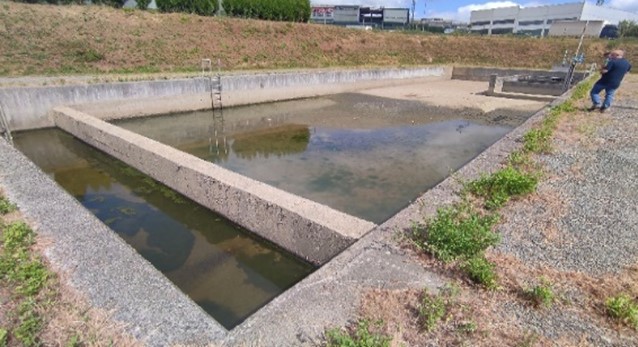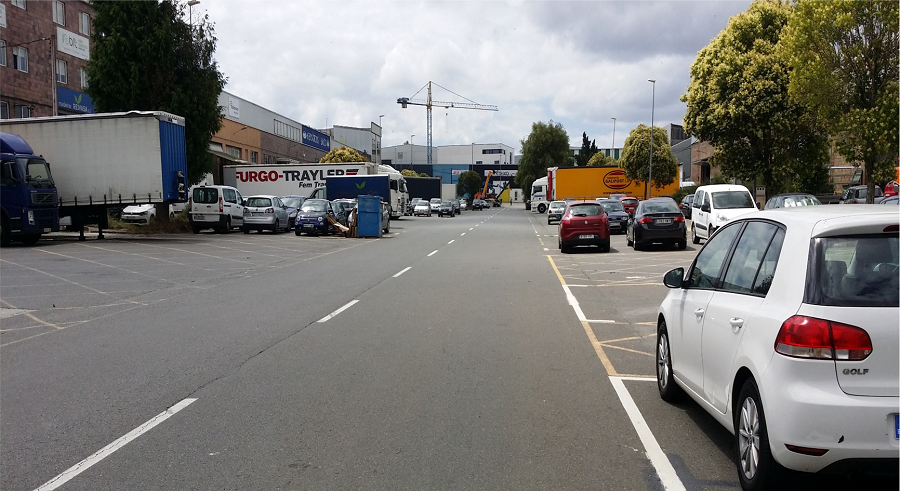After a first phase to establish the basic information, data collection and characterization of the Santiago de Compostela case study (SCS) site, the design proposal for the construction of the SuDS techniques infrastructures for the stormwater treatment of the industrial parks of Tambre and Sionlla was developed.
At Sionlla industrial park, a surface sand filter system will be constructed. This technique captures and temporarily stores stormwater runoff and passes it through a layer of filter material. The treatment process consists on two steps: (i) a settling tank for suspended solids which retains coarse and floating materials; and (ii) a filter bed of sand or sand combined with layers of other active materials, which, due to its specific granulometry, improves removal efficiency. The filtration unit is designed with two independent chambers, to compare filter materials of interest, such as zeolite or crushed mussel shell, in order to enhance heavy metals (HM) removal in dissolved form. This Blue- Green Infrastructure (BGI) technique was chosen firstly, to take advantage of the existing settlling tank in the area and secondly, due to the sand filters effectiveness as a runoff treatment technique and their demonstrated capability to achieve high removal efficiencies for sediments, biochemical oxygen demand (BOD), and HM in particulate form, as well as other micropollutants associated with suspended solids.


Figure 1. SuDS techniques locations in the industial parks of Sionlla (left) and Tambre (rigth) - ©UDC
At Tambre industrial park, work will be carried out in a micro-basin of half a hectare, but with a very high industrial vehicles activity. A biofiltration technique will be used to treat the runoff. The biorretention area is designed with a surface area for temporary storage of rainwater, which is then filtered through a selected soil-medium. Its distinctive feature is the filtration of the stormwater through a specially designed medium, with soil-like characteristics (with a significant percentage of organic matter) and the existence of vegetation on its surface. Runoff that has been diverted to this biofiltration area will infiltrate through the medium, until it reaches a saturation point; at that point, water will begin to accumulate and form a visible water on the surface. The existing vegetation will also act on the hydrological processes through the evapotranspiration. The filtered water will be stored at the bottom of the technique in a storage media and will allow its use (e.g. for irrigation).
Finally, once the two projects have been presented to the city council of Santiago, which has shown great interest on the case study, an information campaign will be carried out in the industrial sector of the Tambre, in order to obtain the definitive authorisation and start the construction permit procedures.
Authors: UDC-Team (17/05/2023)